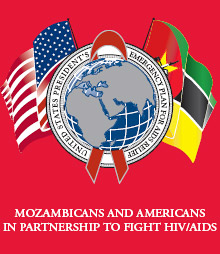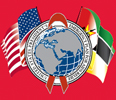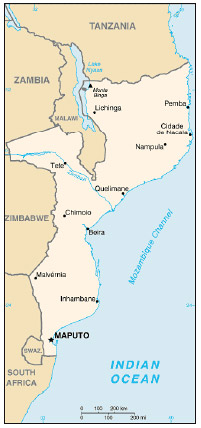| 2008 Country Profile: Mozambique PDF version PDF version

 |
|
2008 Country Profile: Mozambique
National HIV prevalence rate among adults (ages 15-49): 16.1 percent1
Adults and children (ages 0-49) living with HIV at the end of 2005: 1.8 million1
AIDS deaths (adults and children) in 2005: 140,0001
AIDS orphans at the end of 2005: 510,0001
Mozambique is one of the Emergency Plan’s 15 focus countries, which collectively represent approximately 50 percent of HIV infections worldwide. Under the Emergency Plan, Mozambique received nearly $37.5 million in Fiscal Year (FY) 2004, more than $60.2 million in FY 2005, and more than $94.4 million in FY 2006 to implement a comprehensive HIV/AIDS prevention, treatment and care program in line with Mozambique’s national strategies. PEPFAR is providing $162 million in FY 2007. | |
Recognizing the global HIV/AIDS pandemic as one of the greatest health challenges of our time, President George W. Bush announced the President’s Emergency Plan for AIDS Relief (Emergency Plan/PEPFAR) in 2003 — the largest international health initiative in history by one nation to address a single disease. The United States is changing the paradigm for development, rejecting the flawed “donor-recipient” mentality and replacing it with an ethic of true partnership. These partnerships are having a global impact and transforming the face of our world today.
Partnership to Fight HIV/AIDS
The Emergency Plan is supporting Mozambique’s response to HIV/AIDS by:
- Supporting the implementation of the Ministry of Health’s strategic plan to scale up HIV/AIDS treatment and care services through a network model, and working with other international partners to ensure the success of this scale-up;
- Providing direct partner funding and technical/material support along with other agency partners to contribute to the multi-sectoral national response to HIV/AIDS, coordinated by the National AIDS Council;
- Strengthening HIV/AIDS prevention, treatment and care for military and police forces;
- Developing community-level leadership and support for home-based care, treatment follow-up, referral services, psychosocial support, counseling and testing, and prevention services;
- Strengthening community-based services to ensure that orphans and vulnerable children are able to stay in school, have basic food and health services, and receive support from adults and peers;
- Linking government partners, non-governmental organizations, community-based organizations, faith-based organizations, employers, and academic institutions; and
- Finding a balance between immediate needs and longer-term capacity-building to effectively address HIV/AIDS.
| Emergency Plan Results in Mozambique |
| # of individuals receiving antiretroviral treatment as of September 30, 20071 |
|
78,200 |
| # of HIV-positive individuals who received care and support in FY2007 (including TB/HIV)1 |
|
389,000 |
| # of orphans and vulnerable children (OVCs) who were served by an OVC program in FY20071 |
|
280,000 |
| # of pregnant women receiving HIV counseling and testing services for PMTCT since the beginning of the Emergency Plan1,2 |
|
479,800 |
| # of HIV-positive pregnant women receiving antiretroviral prophylaxis for PMTCT since the beginning of the Emergency Plan1,3 |
|
42,700 |
| # of counseling and testing encounters (in settings other than PMTCT) in FY20071 |
|
422,200 |
| # of individuals reached with community outreach HIV/AIDS prevention programs that promote Abstinence and/or Being Faithful in FY2007 |
|
1,982,000 |
| # of individuals reached with community outreach HIV/AIDS prevention activities that promote Condoms and related prevention services in FY2007 |
|
721,200 |
| # of USG condoms shipped from Calendar Year 2004 to 2007 |
|
84,720,000 |
|
Note: Numbers may be adjusted as attribution criteria and reporting systems are refined.
Numbers above 100 are rounded to nearest 100.
1 Total results combine individuals reached through downstream and upstream support.
2 It is possible that some individuals were counseled and tested more than once.
3 It is possible that some pregnant women received antiretroviral prophylaxis more than once over the four-year period, e.g. HIV positive women who were pregnant more than once. |
 |
Emergency Plan Achievements in Mozambique to Date |
|
HIV/AIDS in Mozambique
Mozambique is facing a severe, generalized HIV/AIDS epidemic, but the impact is not uniformly distributed. In 2005, the prevalence of HIV infection among adults ages 15 to 49 was estimated to be 16.1 percent.1 The primary mode of transmission is through heterosexual contact, with women at much greater risk for HIV infection than men.2 Young women ages 15 to 24 have an estimated HIV prevalence of 10.7 percent, compared to a prevalence rate of 3.6 percent among young men in the same age group. A civil war restricted movement within and outside the country until 1992, but returning refugees, as well as economic and commercial activity since then has rapidly fueled HIV prevalence to levels nearly as high as those in neighboring countries. Other populations with high HIV prevalence rates include mobile populations, people in prostitution, and those living in close proximity to major transportation routes.1 Mozambique also suffers co-epidemics of tuberculosis and malaria in addition to seasonal cholera outbreaks, all of which exacerbate the impact of HIV/AIDS.
Challenges to Emergency Plan Implementation
As Mozambique scales up HIV/AIDS programs and more people are reached with prevention, treatment and care services, it is vital to strengthen the capacity of Mozambican individuals and institutions to manage and deliver these services. According to the 2006 Human Development Report, Mozambique has approximately three physicians for every 100,000 people.3 Shortages of other health providers (such as nurses, pharmacists and lab technicians) are comparable. Outside of the health system, where the multi-sectoral HIV/AIDS response depends fundamentally on community-based initiatives and volunteers, Mozambique also is severely disadvantaged, with an adult literacy rate of only 46.5 percent (31.4 percent among women) and high levels of stigma and discrimination.2 In light of these challenges, all PEPFAR-supported HIV/AIDS programs in Mozambique incorporate strong training and support components that are intended to improve the efficiency of current service providers, increase the number of providers, and help partner organizations, especially Mozambican partners, to become more efficient at providing quality services. |
|
 |
Critical PEPFAR Interventions for HIV/AIDS Prevention:
- Supported a program for in- and out-of-school youth in the Maputo Corridor. The program raises awareness of HIV/AIDS and reduces fear and stigma associated with the disease through face-to-face discussions in homes, schools and communities.
- Supported an intensified condom social marketing program in bars, hotels, shops along transport corridors, and other areas of high prevalence or high-risk behavior. The program includes behavior change communication targeting at-risk and high-transmitter populations, such as uniformed services and mobile populations, building knowledge and skills for partner reduction and condom use.
- Enabled “South-to-South” collaboration with Brazilian experts to strengthen the Mozambican national HIV/AIDS program. Brazilian technical experts worked with the Ministry of Health to develop, adapt, and pilot counseling and testing training materials for the prevention of mother-to-child HIV transmission curriculum. Brazilian technical support also helped the National AIDS Council to develop effective systems and procedures to provide funding to community-based and non-governmental organizations.
Critical PEPFAR Interventions for HIV/AIDS Treatment:
- Supported the expansion of CD4 testing technology to provincial reference labs in six provinces.
- Supported the development of a curriculum on comprehensive management of HIV, including antiretroviral treatment and training for health care workers at the physician assistant level.
Critical PEPFAR Interventions for HIV/AIDS Care:
- Supported the initiation of a program to make household-level safe water kits available to people living with HIV/AIDS and their families. The kits consist of clean water bottles and a replenishable, purifying solution, helping to reduce vulnerability to water-borne disease.
- Supported training of and efforts by local communities in southern and central Mozambique to identify orphans and vulnerable children and provide services for them through pastor groups and volunteer networks.
- Supported the training or retraining of home-based care volunteers who now provide care and support for chronically ill persons in their own communities in Zambezia and Sofala provinces.
1 UNAIDS, Report on the Global AIDS Epidemic, 2006.
2 WHO, Summary Country Profile on HIV/AIDS Treatment Scale-up – Mozambique, 2005.
3 United Nations Development Programme, Human Development Report, 2006. |
| |  |  |




 PDF version
PDF version